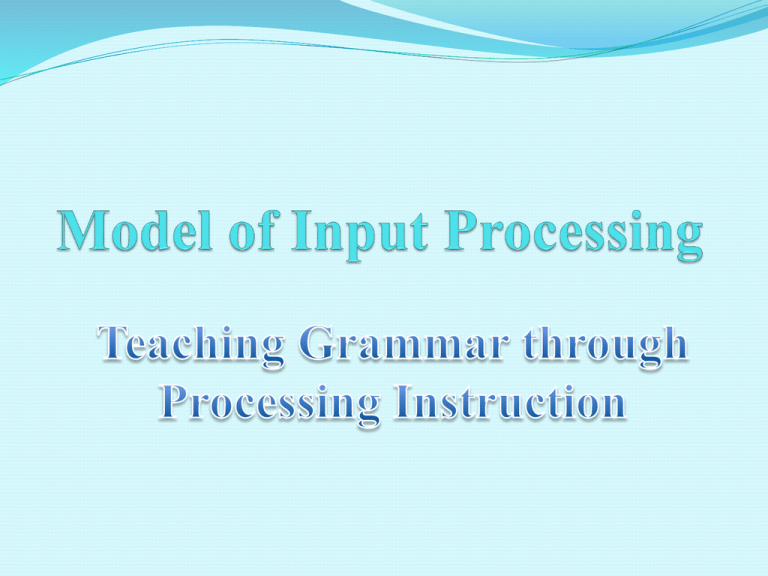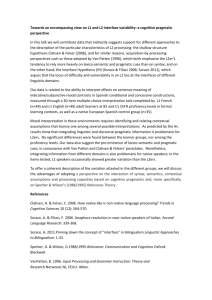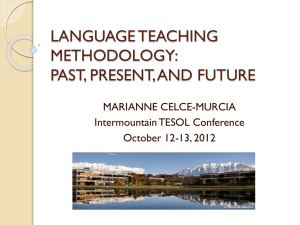Input Processing and Processing Instruction - theories
advertisement

• the cognitive process which occurs when input is understood and integrated into interlanguages (VanPatten, 2002) • the conditions under which learners may attempt to make connections between form in the input and meaning (VanPatten, 2004) • Most studies on input treat issues such as linguistic properties of input and modification of input. Input processing is rather a new focus of research in second language acquisition. Therefore, a model of input processing needs to be developed (VanPatten, 1996). • Traditional approach to grammar instruction consists of drills in which learner output is manipulated and the instruction is divorced from meaning or communication. As a result, an input-based approach to grammar instruction is required (Lee & Benati, 2009). • It is important to differentiate the terms “Input Processing” and “Processing Instruction”. • IP refers to what is assumed to occur in the brain on perceiving input. • PI refers to what the teacher has the learners do in order to notice the grammar of the input. (Sheen, 2007) input processing input intake derivation of intake from input during comprehension developing system the mental representation of the L2 the learner is building over time • a set of processes learners use to make form-meaning connections during input processing (VanPatten, 1996) Principle 1. The Primacy of Meaning Principle •Principle Learners input forPrinciple meaning before they 2. process The First Noun process it for form. (VanPatten, 2004) • Learners tend to process the first noun (phrase) in the sentence encounter theyard. A young boy and they an old man are inasthe subject/agent. (VanPatten, 2004) The black cow was kicked by the brown horse. • explicit information about the target structure • explicit information about processing strategies • structured input activities referential activities with a right or wrong answer(Wong, requiring2004) learners to pay attenti0n to form in order to get meaning affective activities with no right or wrong answer requiring learners to express an opinion or belief Lee, J. F., and Benati, A. G. (2009). Research and Perspectives on Processing Instruction. Berlin:Walter de Gruyter GmbH. books.google.com. Sheen, R. (2007). "Processing Instruction". ELT Journal, 61(2). books.google.com. VanPatten, B. (1996). Input Processing and Grammar Instruction. Norwood, NJ: Ablex. VanPatten, B. (2002). “Processing Instruction: An Update”. Language Learning. 52(4). Lawrence Erlbaum. books.google.com. VanPatten, B. (2004). Processing Instruction: Theory, Research, and Commentary. Mahwah, NJ: and J. Williams (Eds.), Theories in Second Language Acquisition: An Introduction (pp. 115-135). VanPatten, B. (2007). Input Processing Adult Second Language Acquisition. In B. VanPatten Mahwah, NJ: Lawrence Erlbaum.inbooks.google.com. Instruction: Theory, Research, and Commentary (pp. 33-63). Mahwah, NJ: Lawrence Wong,Erlbaum. W. (2004). The nature of processing instruction. In B. VanPatten (Ed.), Processing books.google.com.







